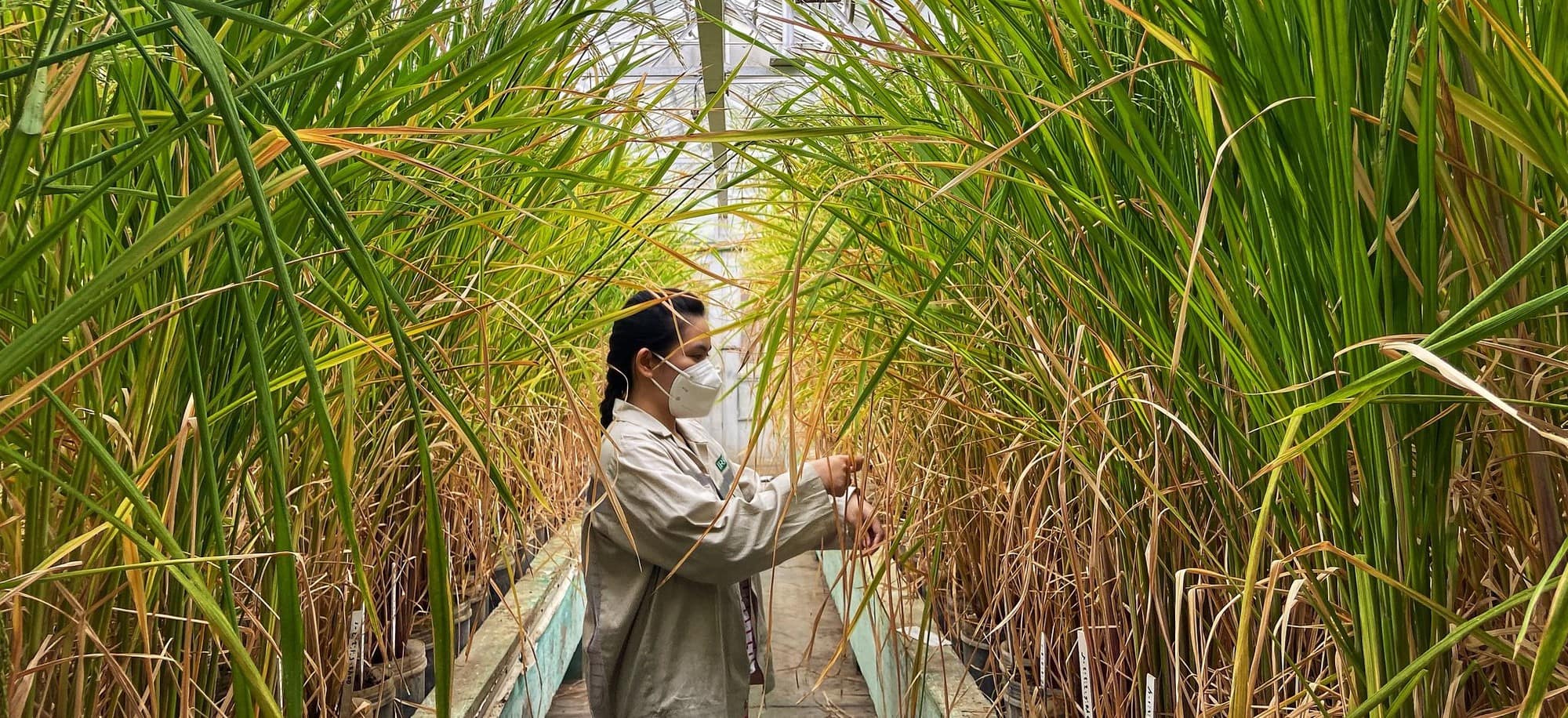Genebank
The CGIAR Genebank Platform supports the activities of the CGIAR genebanks and germplasm health units (GHUs) to conserve and make available crop, forage, and tree genetic resources, contributing to the United Nations’ Sustainable Development Goals (specifically Target 2.5).
CGIAR germplasm distribution and use
The year 2020 was an extraordinary year, with lockdown measures affecting genebank operations and demand for germplasm, as well as other areas of research and delivery. All genebanks and regions were impacted to some degree, with those located in Latin American countries being significantly disrupted due to their long and strict lockdown conditions.
Despite these conditions, by the end of the year, a total of 43,530 germplasm samples (36,661 accessions) were distributed by CGIAR genebanks to users (see Figure 1), which represents around half the amount of germplasm distributed in a normal year.
The total number of requests from external users was reduced by more than a quarter compared to 2019, reaching 889 requests in 2020, of which 91% were successfully concluded during the year.
Figure 1. Samples and accessions distributed annually by CGIAR genebanks from 2012 to 2020

Consistently over the last four years, germplasm distribution to requesters outside CGIAR has exceeded distribution to CGIAR Programs. In 2020, 75% of germplasm distributions went outside CGIAR to recipients in 79 countries. Lower-middle income countries received the largest proportion (49%) of germplasm shipments in 2020 (see Figure 2).
Figure 2. Distribution of germplasm from CGIAR genebanks in 2020 (excluding distributions to CGIAR programs)

Note: Income and regional categories based on World Bank classification.
Of the external distributions in 2020, 42% of samples were sent to universities or research institutes, 31% to national agriculture research systems, the rest going to the commercial sector, nongovernmental organizations (NGOs), farmers, and others.
Most samples (78%) were traditional cultivars or wild relatives of crops. Table 1 lists the top country recipients of germplasm from CGIAR genebanks (not including materials transferred within or between CGIAR Centers).
Table 1. Top ten countries receiving germplasm from CGIAR in 2020 (excluding distributions to CGIAR programs)

Notes: *Rank by number of samples. Income category based on World Bank classification.
In 2020, 75% of germplasm distributions went outside CGIAR to recipients in 79 countries. Lower-middle income countries received the largest proportion (49%) of germplasm shipments in 2020.
Progress on germplasm availability and safety duplication
By the end of 2020, CGIAR genebanks were managing a total collection of 736,210 crop, forage, and tree accessions, including 26,224 in vitro accessions and 32,930 accessions held as trees or plants in the screenhouse or field. Approximately 82% of the total collection is acceptably viable, free of quarantinable disease, with adequate stock and legally available for international distribution.
Of the seed accessions, 60% is secured in safety duplication at two levels and 78% is duplicated at the Svalbard Global Seed Vault. Sixty-five percent of clonal crop collections is safety duplicated in the form of cryopreserved or in vitro cultures.
Availability rates
Despite the effect of COVID-19 lockdowns on operations, the numbers of available accessions increased in all genebanks in 2020, except for the International Rice Research Institute (IRRI) genebank, which sustained its 90% target. Six out of 10 seed collections have now reached the 90% availability target.
The International Maize and Wheat Improvement Center (CIMMYT) and the Alliance of Bioversity International and CIAT were able to archive materials thanks to a new CGIAR Guidance Note on Improving Accession Management, which has reduced the total size of collections under their management and brought them closer to the performance targets. AfricaRice, the Alliance of Bioversity International and CIAT, and the International Institute of Tropical Agriculture (IITA) genebanks also improved safety duplication status through shipping accessions for safety duplication.
By the end of 2020, CGIAR genebanks were managing a total collection of 736,210 crop, forage, and tree accessions, including 26,224 in vitro accessions and 32,930 accessions held as trees or plants in the screenhouse or field.
Germplasm Health Units (GHUs)
In 2020, the GHUs health-tested 295,742 samples for approximately 400 seed-borne pests and pathogens using a total of 1,056,417 diagnostic assays. Most (75%) of the tested samples were for conservation actions in genebanks, with the rest being for import or export of germplasm. Nearly 10% of the samples were infected and eliminated.
GHUs facilitated 1,415 germplasm and some nonplant exchanges with 123 countries. Together, the group continued to develop quality management systems, drafting 172 Standard Operating Procedures and mapping them to a shared GHU operational framework. GHUs at AfricaRice, the International Livestock Research Institute (ILRI), and World Agroforestry (ICRAF) continued to be upgraded.
Policy contributions
In 2020, the Genebank Platform coordinated CGIAR’s engagement in the development of the Post-2020 Global Biodiversity Framework of the Convention on Biological Diversity (CBD). The Platform also contributed to Plant Treaty meetings on the development of decision-making tools for the implementation of farmers’ rights under Article 9.
The Genebank Platform supported CGIAR Centers in complying with their policy and legal obligations through a range of measures, including the development of guidelines and decision-making tools for improving accession management and enhancing operations under the frameworks of the Plant Treaty and the CBD.



